In Florence, the Uffizi dedicates an exhibition to one of the greatest art historians ever, Aby Warburg (Hamburg, 1866 - 1929): from September 19 to December 10, 2023, the exhibition Rooms with a View. Aby Warburg, Florence and the Laboratory of Images, with more than one hundred pieces including drawings, photographs, paintings, documents and panels of the famous Mnemosyne atlas, reconstructs the revolutionary ideas of the scholar who changed the study of images.
When in his last year of life Aby Warburg wrote “Florence is my destiny,” the scholar was summarizing a more than 40-year connection with the city that began with his first stay in 1888. Florence was instrumental in shaping the thinking of Warburg, the father of fundamental theories on image culture and a central figure in the early years of the Kunsthistorisches Institut in Florenz, the German institute of art history founded in Florence in 1897. The importance of the city for the scholar consisted not only in the extraordinary concentration of ancient and Renaissance works among which he could immerse himself, but in the great historical-political and urban transformations of the time.
This is the thread running through Rooms with a View. Aby Warburg, Florence and the Laboratory of Images. The exhibition is curated by the Uffizi Galleries and the Kunsthistorisches Institut in Florenz - Max-Planck-Institut in collaboration with the Warburg Institute in London (specifically, Costanza Caraffa, Marzia Faietti, Eike Schmidt, Bill Sherman, Giovanna Targia, Claudia Wedepohl and Gerhard Wolf participated in the curatorship) and, as anticipated, features many panels from the recently reconstructedMnemosyne Atlas, the scholar’s last major project: a large ’figurative atlas’ consisting of a series of panels made up of photographic montages of different works. The panels are exceptionally displayed in the halls of the Uffizi Galleries, allowing for the first time a direct confrontation with the works and bringing Warburg’s experiments back to the very place from which they were inspired.
The museum’s collections (with Botticelli’s Primavera and Birth of Venus, the Portinari Triptych, the Group of the Niobids and the Laocoon by Baccio Bandinelli) thus dialogue vis à vis with Warburg’s laboratory of images. More than 100 photographs, drawings, and documents, as well as works by contemporary artists such as William Kentridge, Lebohang Kganye, Alexander Kluge, Goshka Macuga, MaÅ‚gorzata Mirga-Tas, Sissi Daniela Olivieri, and Akram Zaatari face each other among the paintings and sculptures in the museum’s permanent collection. This allows the exhibition to offer itself to the public in a dual function: to shed light on the dynamics that led to the assembly of theAtlas and, at the same time, in the footsteps of Aby Warburg, to try to look at the same works with a new gaze. Making use of a rich documentary apparatus, the exhibition then invites us to metaphorically visit Florence together with the scholar, also presenting aspects of the international cultural life of the Tuscan capital around 1900 and illustrating traces of Warburg’s presence and his studies in Florentine museums and archives today. Finally, it gives an account of his engagement with the city’s leading figures and institutions.
Accompanying the exhibition is Aby Warburg’s Florence app, available on the Apple App Store and Google Play Store, which invites visitors to follow three itineraries along the streets of Florence, pointing out works that refer to the plates in theMnemosyne Atlas. Along the way, a selection of ’Florentine voices’ reveals unexpected perspectives on the city from the Florence of the second half of the 15th century to that contemporary to Warburg.
“For Aby Warburg,” comments Uffizi Director Eike Schmidt, “the role of Florence, and especially the Uffizi, is more than evident when one considers that after his first stay in the city in 1888-89 he wrote his doctoral dissertation on the two mythological paintings most famous today, by Sandro Botticelli: the Primavera and the Birth of Venus (at the time far from the popularity of today). But his comparative method, as seen in the Atlas of Images that he called Mnemosyne, was also the foundation of the major transformations and layouts of our museum after World War II, testifying to the modernity - still alive - of his thinking.”
“Nearly 100 years after the Institute he founded was exiled to London, Aby Warburg is finally experiencing a homecoming,” emphasizes Bill Sherman, director of the Warburg Institute. “In 2020-22 we were pleased to contribute to exhibitions on his projects in Germany, his native country. But Warburg’s heart was in Italy-and his soul, as he put it, in Florence. It is therefore a special thrill to bring Warburg back to the museum where he found his calling. Warburg’s encounter with the Uffizi changed the course not only of Warburg’s career, but of art history itself, and I hope that the new encounters proposed in this exhibition will breathe new life into the questions Warburg posed in the last decade of the 19th century.”
"Rooms with a View," says Gerhard Wolf, director of the Kunsthistorisches Institut in Florenz - Max-Planck-Institut, “is the result of an impressive collaborative effort, with the intention of demonstrating the great relevance of Warburg’s laboratory of images. His experimental approach of thinking with images is indeed a great inspiration even a hundred years later, when compared with the digital ’world’ of images, as is his study of the psychic energies of art. In the exhibition, I am very fascinated by the triple dialogue between the works of the Galleries, Warburg’s images and the works of contemporary artists.”
“An unprecedented, and in some ways experimental, exhibition cohabits with the tradition embodied, in the highest sense of the term, by the Uffizi, connoted as they are by an inextricable set of collections and historical and monumental spaces,” explains curator Marzia Faietti. The place, a fascinating palimpsest of our civilization, at the same time stimulates one to look beyond, following in the footsteps of the experimentalism of the true artists of every age and the expanded gaze toward new worlds of the Medici. What more suitable venue for an exhibition on Aby Warburg?"
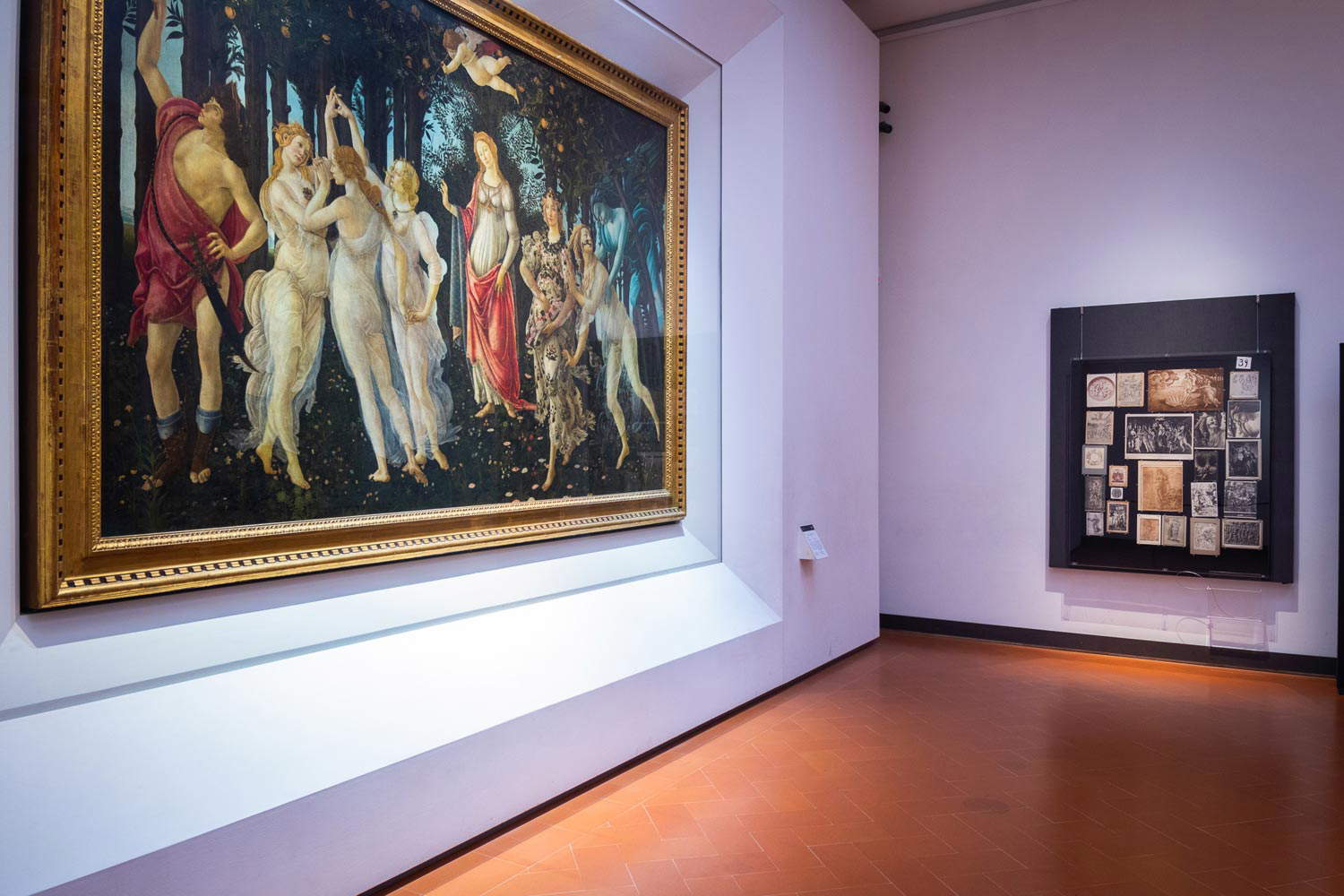
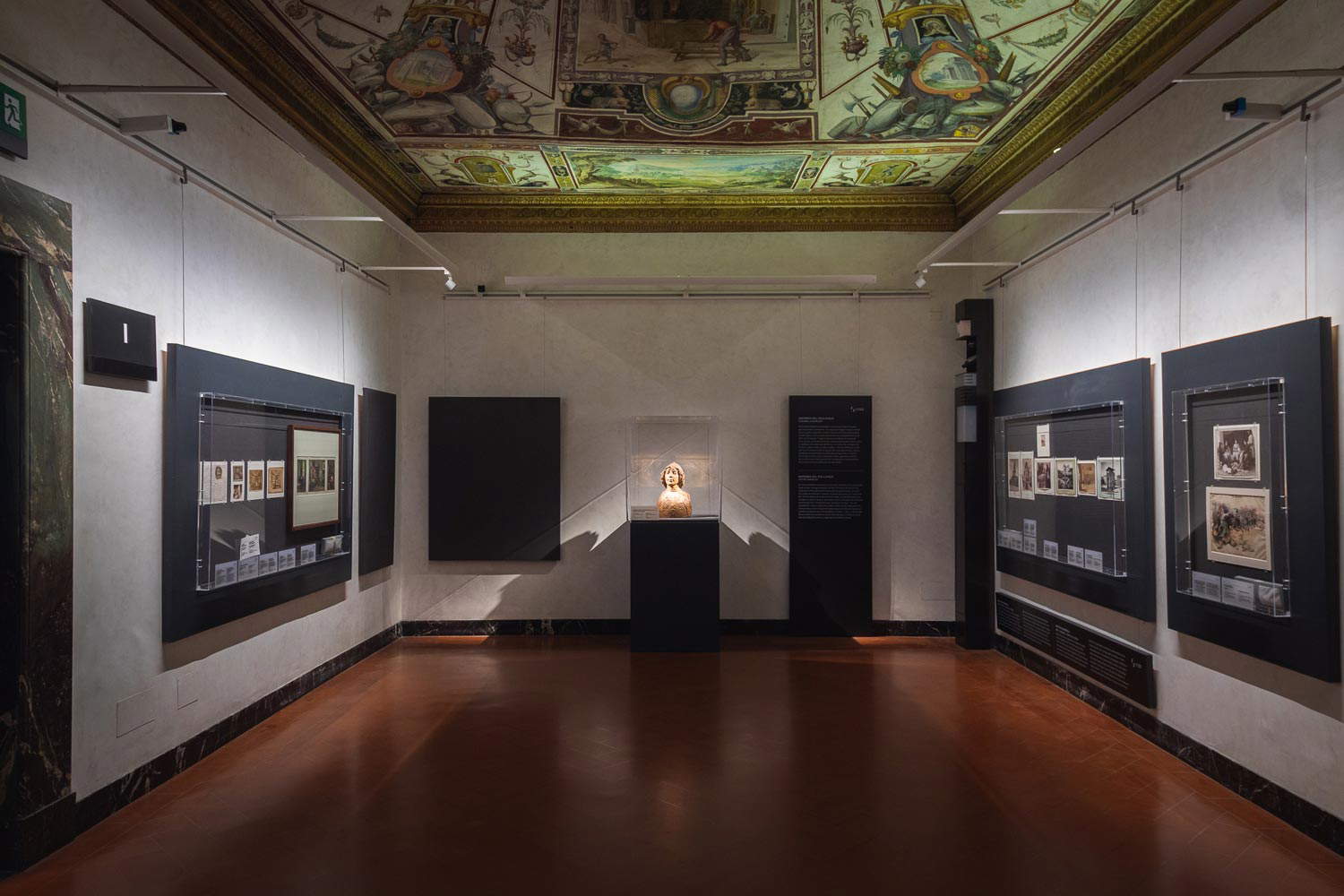
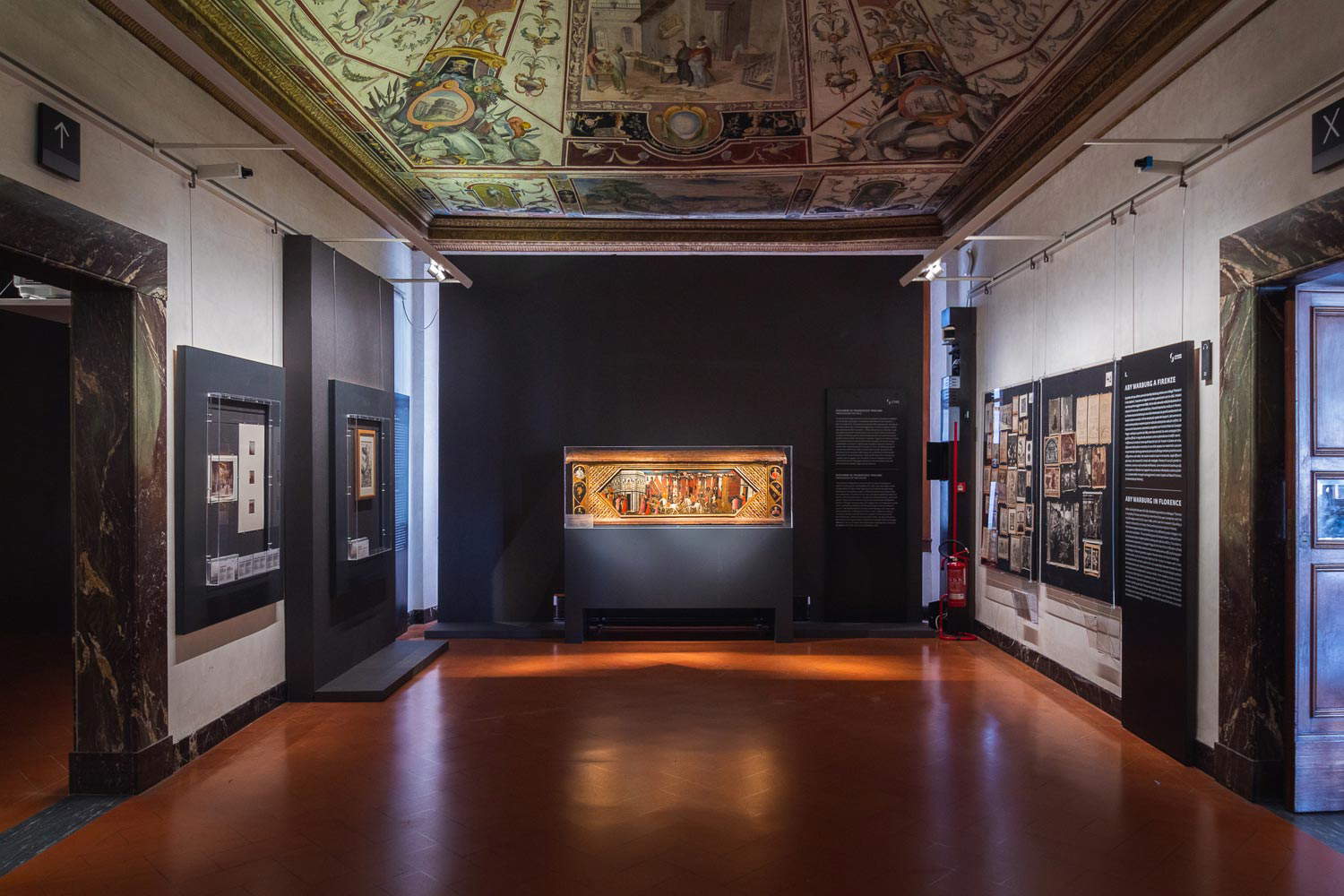
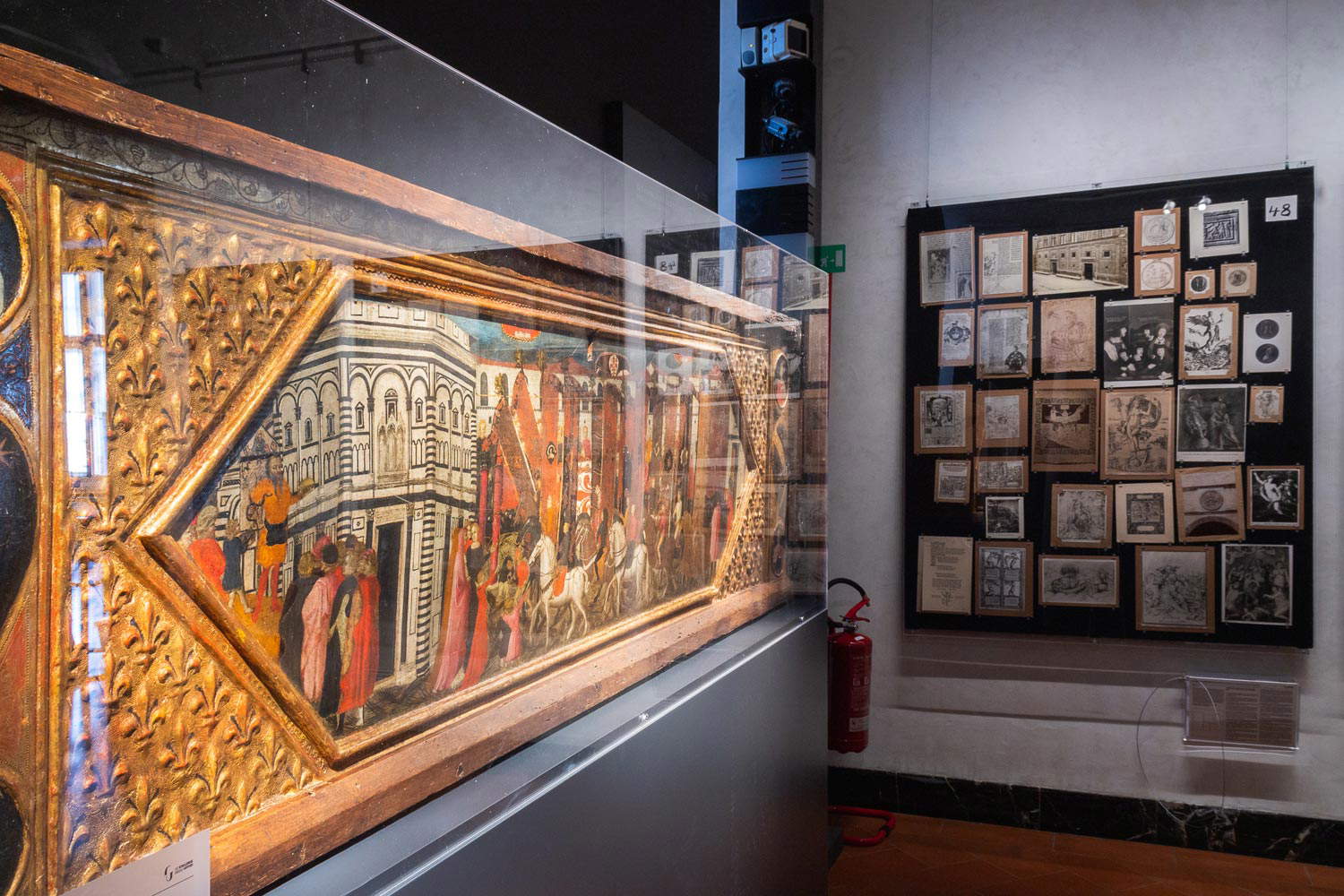
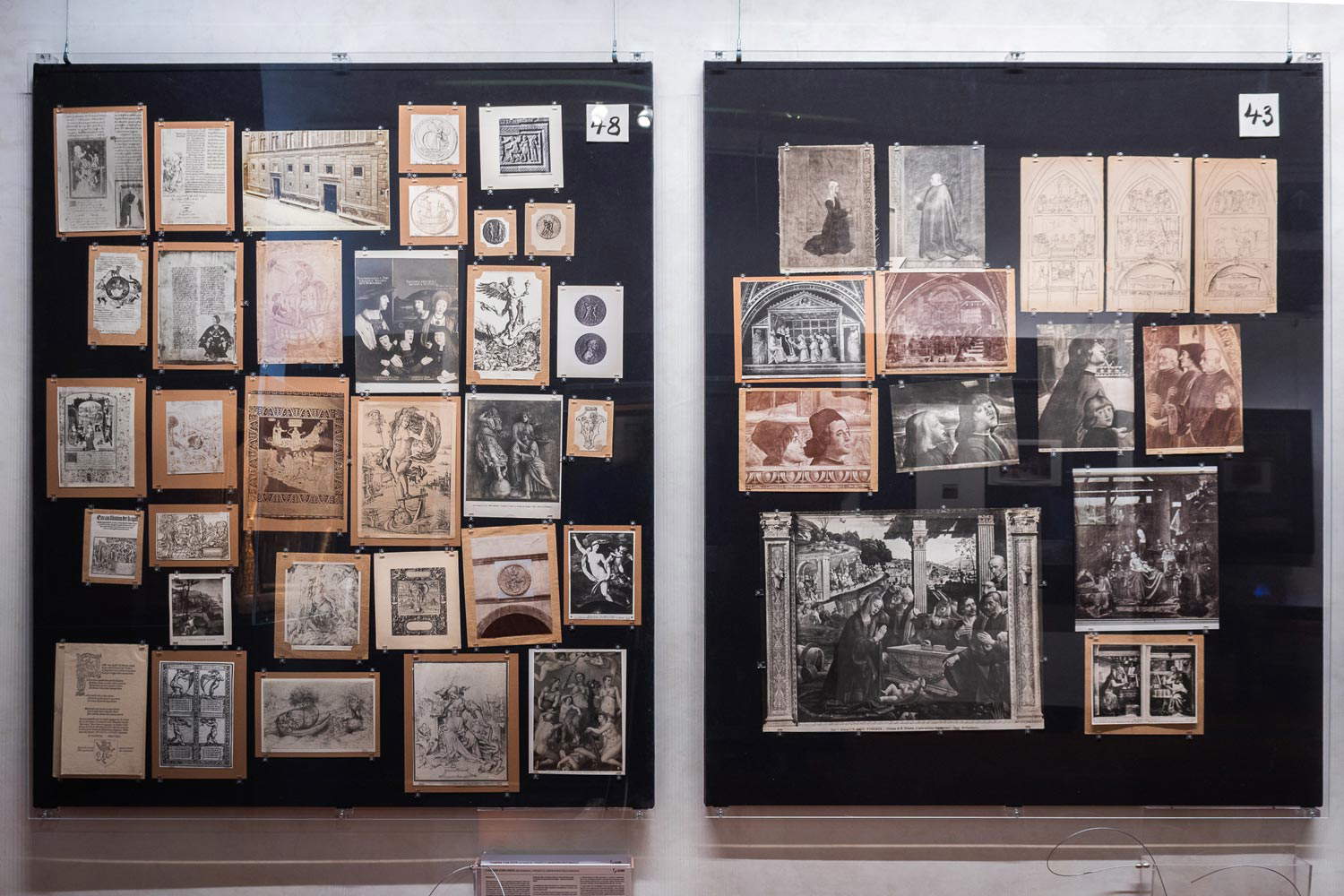
Aby Warburg (Hamburg, 1866 - 1929) is today among the most important reference authors in art history and the anthropology of images. Born in Hamburg to a Jewish-born banking family, he started a library for cultural studies, which in 1933, as a result of the rise of Nazism, would be moved to London, where it is still located today under the name Warburg Institute. In his work on the recovery of the pathos and movement of ancient works in the Renaissance and beyond, Florence plays a key role. It was here that Warburg spent a semester as an art history student between 1888 and 1889, met his future wife, the artist Mary Hertz, and was among the initiators of the Kunsthistorisches Institut in Florenz, a research center still active today as the Max Planck Institute dedicated to art history and its contemporary challenges. Warburg studied Botticelli’s mythological paintings and Medici festive apparatus. After a trip to Arizona and New Mexico that led him to approach Hopi and Pueblo art and culture, he married in 1897 and settled in Florence to study the Renaissance with a fresh eye. By 1904 he was in Hamburg, expanding his research to the history of astrological imagery. World War I, threatening German-Italian dialogue, causes his mental and nervous equilibrium to plummet: as a result, he spends years in Binswanger’s clinic on Lake Constance (1921-1924). Returning to work, he devoted himself to producing an Atlas of Images with photographs and reproductions arranged according to thematic constellations, like a map of cultural memory, entitled Mnemosyne; upon his death in 1929, this synthesis of his studies would remain unfinished.
 |
| Uffizi dedicates major exhibition to Aby Warburg |
Warning: the translation into English of the original Italian article was created using automatic tools. We undertake to review all articles, but we do not guarantee the total absence of inaccuracies in the translation due to the program. You can find the original by clicking on the ITA button. If you find any mistake,please contact us.